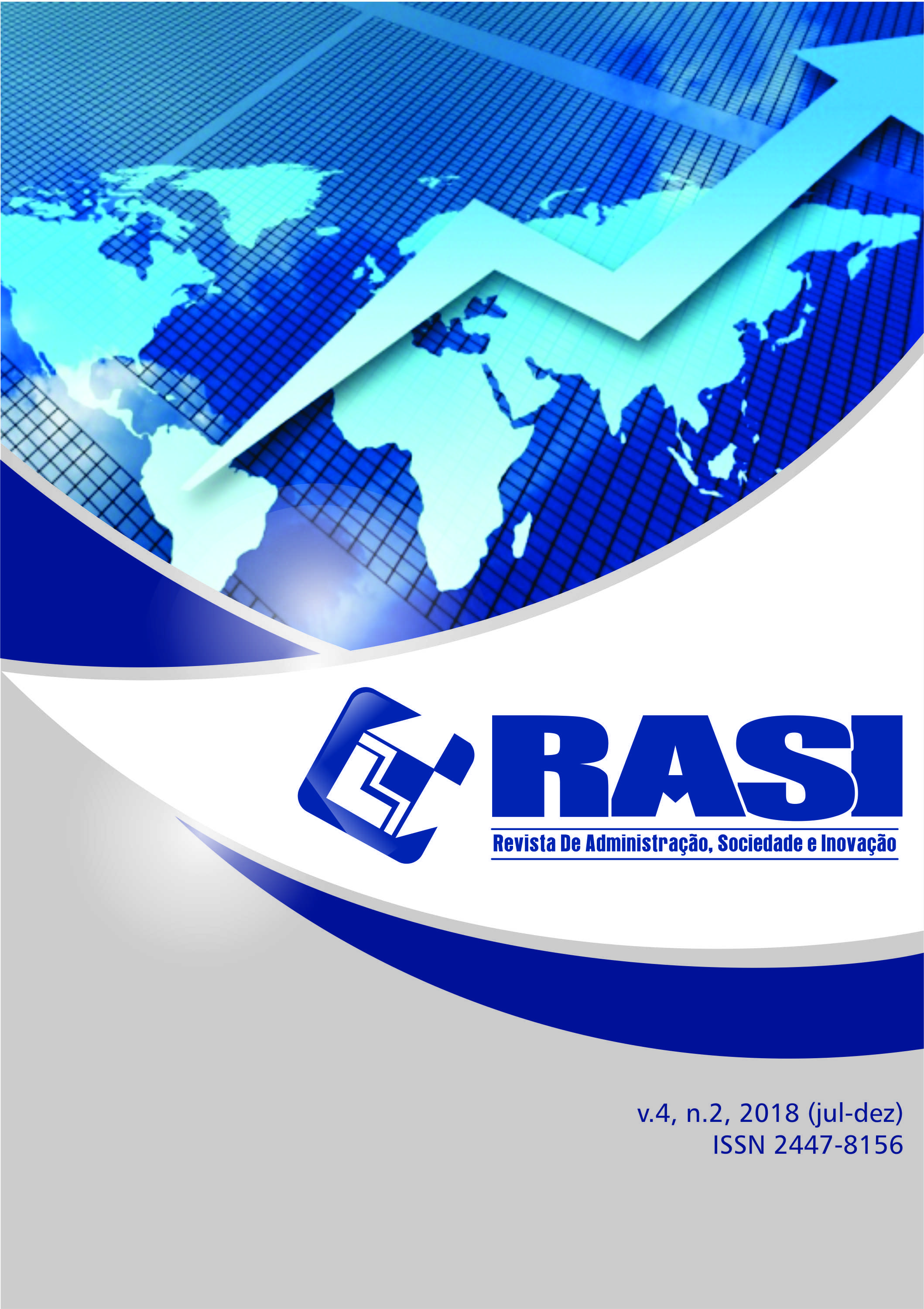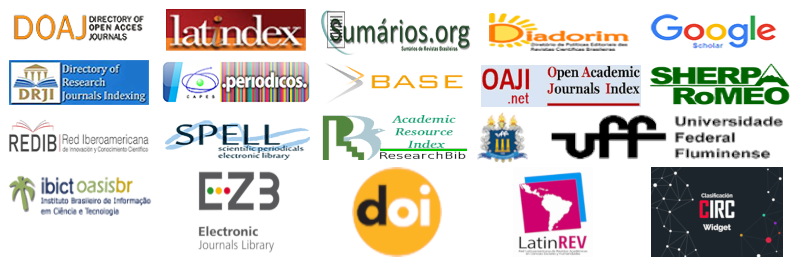Determinantes da Estrutura de Capital no Brasil: Evidências Empíricas a partir de Dados em Painel no período entre 2010 e 2016
DOI:
https://doi.org/10.20401/rasi.4.2.211Abstract
Esse estudo analisa os fatores determinantes da estrutura de capital das companhias abertas brasileiras (exceto instituições financeiras e seguradoras) com ações listadas na BM&BOVESPA no período de 2010 a 2016, sob a perspectiva da pecking order theory e da tradeoff theory, empregando metodologia de dados em painel e modelos econométricos com variáveis de controle referentes à tangibilidade dos ativos, ao porte das empresas, a oportunidades de crescimento e à rentabilidade dos ativos. Este artigo preenche lacuna relativa ao reduzido número de estudos correlatos no período objeto da análise e considera base de dados homogênea oriunda das demonstrações financeiras elaboradas de acordo com as normas internacionais de contabilidade a partir de 2010. Possíveis limitações desse artigo advêm do reduzido número de companhias brasileiras com ações listadas em bolsa, assim como o reduzido número de observações comparativamente aos estudos semelhantes, notadamente os focados no mercado de capitais norte-americano. Os resultados obtidos sugerem que as companhias abertas brasileiras se financiam substancialmente por meio da emissão de dívida, corroborando o modelo da pecking order theory. Não foram encontradas evidências robustas que sugiram que empresas sigam o modelo da tradeoff theory.
Palavras-Chave: Estrutura de capital, Pecking Order Theory, e Tradeoff Theory.
Downloads
References
Banco Nacional de Desenvolvimento Econômico e Social. (2017). Disponível em: <www.bndes.gov.br>. Acesso em: 15/07/2017.
Comissão de Valores Mobiliários. (2017). Boletim de Mercado. 42, 1-12.
De Angelo, H., & Masulis, R. W. (1980). Optimal Capital Structure under Personal and Corporate Taxation. Journal of Financial Economics, 8(1), 3-27.
Easterbrook, F. H. (1984). Two Agency-Cost Explanation of Dividends. The American Economic Review, 74(4), 650-659.
Economatica®. www.economatica.com.br. Acesso em 15/07/2017.
Fama, E. F. (1984). Agency Problems and the Theory of the Firm. The Journal of Political Economy, 58, 288-307.
Fama, E. F., & French, K. R. (2002). Testing Trade-off and Pecking Order Predictions about Dividends and Debt. The Review of Financial Studies, 15(1), 1-33, 2002.
______. Financing decisions: who issues stock? (2005). Journal of Financial Economics, 76(3), 549-582.
Frank, M. Z., & Goyal, V. K. (2003). Testing the pecking order theory of capital structure. Journal of Financial Economics, 67, 217-248.
Graham, J. R., Leary, M. T., & Roberts, M. R. (2015). A century of capital structure: The leveraging of corporate America. Journal of Financial Economics, 118, 658-683.
Gujarati, D. N., & Porter, D. C. (2011). Econometria Básica, 5. ed. Porto Alegre: McGraw Hill Bookman.
Harris, M., & Haviv, A. (1991). The Theory of Capital Structure. The Journal of Finance, 46, 297-355.
Instituto Assaf. Disponível em: <www.institutoassaf.com.br>. Acesso em: 15/07/2017.
Jalilvand, A., & Harris, R. S. (1984). Corporate Behavior in Adjusting to Capital Structure and Dividend Targets: An Econometric Study. The Journal of Finance, 39(1), 127-145.
Jensen, M. C. (1986). Agency costs of free cash flow, corporate finance and takeovers. The American Economic Review, 76(2), 323-329.
Jensen, M. C., & Meckling, W. H. (1976). Theory of the Firm: Managerial Behavior, Agency Costs and Ownership Structure. Journal of Financial Economics, 3(4), 305-360.
Kumar, S., Colombage, S., Rao, P. (2017). Research on capital structure determinants: a review and future directions. International Journal of Managerial Finance, 13, 106-132.
Medeiros, O. R., & Daher, C. (2008). Testando Teorias Alternativas sobre a Estrutura de Capital nas Empresas Brasileiras. RAC, v. 12(1), 177-199.
Modigliani, F., & Miller, M. H. (1958). The Cost of Capital, Corporate Finance, and the Theory of Investment. The American Economic Review, 48(3), 261-297.
______. (1963). Corporate Income Taxes and the Cost of Capital: A Correction. The American Economic Review, 53(3), 443-453.
Myers, S. C. (2001). Capital Structure. The Journal of Economic Perspectives, 15(2), 81-102.
Myers, S. C., Allen, F., & Brealey, R. A. (2017). Principles of Corporate Finance, 12th ed. New York: McGraw Hill.
Myers, S. C., & Majluf, N. S. (1984). Corporate Finance and Investment Decisions When Firms Have Information That Investors Do Not Have. Journal of Financial Economics, 13(2), 187-221.
Myers, S. C., & Shyam-Sunder, L. (1999). Testing static tradeoff against pecking order models of capital structure. Journal of Financial Economics, 51, 219-244.
Nakamura, W. T., Correa, C. A., & Basso, L. F. C. (2013). A Estrutura de Capital das Maiores Empresas Brasileiras: Análise Empírica das Teorias de Pecking Order e Trade-Off, Usando Panel Data. RAM. Revista de Administração Mackenzie, 14(4), 106-133.
Nakamura, W., Martin, D. M. L., Forte, D., Carvalho Filho, A. F., Costa, A. C. F., Amaral, A. C. (2007). Determinantes de Estrutura de Capital no Mercado Brasileiro – Análise de Regressão com Painel de Dados no Período 1999-2003. Revista Contabilidade e Finanças, 18(44), 72-85.
Rajan, R. G., & Zingales, L. (1995). What Do We Know about Capital Structure? Some Evidence from International Data. Journal of Finance, 50(5), 1421-1460.
Sanvicente, A. Z., Bortoluzzo, A. B., & Bortoluzzo, M. M. (2017). Capital structure determinants of financially constrained and unconstrained firms. São Paulo School of Economics, Working paper 451, 38.
Titman, S., & Wessels, R. (1988). The Determinants of Capital Structure Choice. Journal of Finance, 43(1) 1-19.
Torres-Reyna, O. (2007). Panel Data Analysis Fixed and Randon Effects. Disponível em: <dss.princeton.edu/training>. Acesso em: 16/07/2017.
Vo, X. V. (2017). Determinants of capital structure in emerging markets: Evidence from Vietnam. Research in International Business and Finance, 40, 105-113.
Wooldridge, J. M. (2016). Introdução à Econometria – Uma Abordagem Moderna, 3. ed. São Paulo: Cengage.
Downloads
Published
Issue
Section
License
RASI, in accordance with Law No. 9,610 of February 19, 1998, which amends, updates and consolidates Brazilian copyright law and makes other provisions, adopts the following conditions of the Copyright Assignment:
1. RASI maintains, with the transfer of copyrights, the possession of rights over the content published;
2. The author retains his moral rights of the content, including the right to be identified as the author whenever the content is published;
3. Despite the attribution of copyright, the author retains the right to reuse the material in future collections of his own work without encumbrance. The acknowledgments of the previous publication in the RASI are the only requirements in such cases;
4. The author may make photocopies of the content, or distribute it by electronic mail or fax, provided that they are intended for their own classes and for the purpose of meeting research objectives, provided that: (a) such copies are not resold and (b) reference to the original source of the publication and the name of the RASI are clearly indicated on all copies made of the document.











